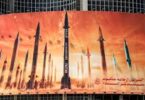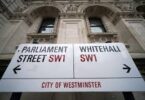Natalia Naseem
Introduction
Pakistan has been facing a power crisis for quite some time now with certain areas in the country still devoid of proper electricity. The areas that do have an electric supply often face issues with load-shedding or voltage fluctuations. Recently, there was also a nationwide blackout that caused much concern and led to business losses. Business owners also often complain about machine breakdowns brought about by electricity fluctuations and uncertainty. Many governments have tried different policy measures to mitigate the issue of power in Pakistan, ranging from nationalization and privatization of power companies to load shedding and collaborations with private firms.
The government has announced plans to improve the provision of electricity in the country, including increased reliance on alternative forms of energy generation. There has been a particular focus on solar power with many companies reporting the receipt of government subsidies to expand the scope of their operations. Pakistan has a huge potential for solar energy and some reports estimate that using less than 1% of the total solar area available in Pakistan can fulfill the energy needs of the country. One project capitalizing on this potential is the Quaid-e-Azam Solar Park located in Bahawalpur, aimed to provide safe, sustainable energy to Pakistan and stimulate more alternative energy projects in the country.
Discussion
Pakistan is one of the largest countries in South Asia, based on population with an annual increase of almost 2%. The country has a sizeable potential for renewable energy, especially solar energy thanks to sunlight hours and days. However, the majority of Pakistan’s energy is dependent on non-renewable fossil fuels, especially natural gas and coal. These put immense pressure on the economy of Pakistan since most of the raw materials are imported; despite this the energy mix has proven to be inefficient. Pakistan faces acute shortages and breakdowns of electricity, with an inefficient transmission and distribution system. These issues hamper the long-term growth of the country and increase environmental costs.
The Quaid-e-Azam Solar Park is located in Bahawalpur, Punjab running on a photovoltaic system of energy production and has the honor of being the first substantial ‘utility grade’ solar plant in the country. The photovoltaic technology is important for its environmental benefits and is sought after for long-term success in sustainable renewable technologies. The project is managed by the Quaid-e-Azam Solar Power (Pvt.) Ltd company of the state of Pakistan. It is projected to have a 400 and 600 MW capacity with 400MW being installed and 600MW still a work in progress.
The project promised to use ‘poly-crystalline photovoltaic cells’ in order to produce energy that was completely green and would be added to the grid at the national level. According to project documents, this project would create 165,000MWh of electricity for the duration of the initial crediting period. This would lessen 98,043 tonnes of carbon dioxide from the environment per year. Furthermore, the project promised to create sustainable development for the region through economic stabilization, citing reasons like reduced unemployment and reducing carbon dioxide emissions.
Quaid-e-Azam Solar Park was scheduled to be developed in three different phases and would total 1000MW when finished. The first 100MW powerplant was completed in 2015, costing approximately $131 million. This project was completed through Government of Punjab’s equity with a 70% financing by the Bank of Punjab. The government of Punjab leases the land used for this project at the rate of $1 per annum for each acre.
A rigorous and meticulous plan was followed for the procurement of the project, using international standards which were based on standards provided by the International Federation of Consulting Engineering. The project contractor provided a performance guarantee for a period of 25 years as a bank guarantee. This was a measure introduced to ensure quality and the life of the power plant. The solar panels were independently tested for quality and specification compliance, twice. One of the tests was done at the manufacturing facility and another at the site, conducted by PV Lab of Germany. The project managers tested transformers at their manufacturing plants before they were shipped to Pakistan.
The project costed Rs. 14.8b billion and was financed by debt and ratio as per the debt equity ratio of 75:25. To finance the project, the managers obtained a long-term loan of Rs. 11 billion over a period of 10 years. The total engineering, procurement and construction costs amounted to approximately Rs. 13 billion and this was below the expected cost of the project before it began construction, showing how it has been under the budget.
A project validation report of the Quaid-e-Azam Solar Park concluded that the project was performing as per the criteria set out by Pakistan, compliant with all guidelines laid down by UNFCCC. The monitoring plan provided by the manager for the plan was also sufficient and transparent. The report found that emission reduction aimed at 6868,000 tonnes of carbon dioxide would be successfully achieved before the end of the first crediting period. The calculations used by the project team for this were found to be adequate and transparent, using conservative estimates to reach conclusions.
The first project phase was completed on time in 2014 within the set budget. Hence, it fulfilled the budget, scope and cost requirements that all projects have. However, the second phase of the project did not fare as well in the time management aspect. WAPDA raised concerns over the award for construction, claiming it was not transparent and had been prematurely awarded within just a week of the start of bidding by prospective companies. This created significant problems and was an obvious challenge for the project.
During the installation process of the second phase, which was the 300MW share of the project, there was an issue with the tariff for the 600MW part of the phase. This caused an inconsistency in the project plan and drove a wrench in the project budget, making the investment insecure. Ultimately, the construction firm challenged this decision and declared that it would cease construction and work if tariffs were reduced, this culminated with WAPDA granting subsidies to make up for the loss and increased the already high burden of circular debt on the government.
There were two specific measures used to evaluate the performance of the project and these include energy production, performance ratio and AC power generation. The energy production was measured on the basis of a grid attached to the PV system, using daily and monthly data of the energy supplier to the transformer. The monitoring report found that the plant was performing beyond the set targets communicated by NEPRA (National Electric Power Regulatory Authority). NEPRA set production targets at 153.3GWh for the year spanning July 2015 – July 2016, the plant produced 160.1GWh. For the year July 2016 – July 2017, the plant produced 160.2GWh against a target of 152.2GWh target. This shows that the plant is performing well and has been successful in maintaining their set targets, indicative of a project effectively executed.
The performance ratio was calculated on the basis of the total solar energy which was converted into electric energy. This ratio shows is the middle point of actual energy production and the target production. The performance ratio measured in 2016 was 0.60, compared to the 0.8 of the most effective ‘best in class system’. However, provisions need to be made for the natural environment as the production ratio changes due to the environment, increasing in the high temperatures of Pakistani summers. An inverter in the plant had losses of 2% in conversion, averaged out to 20% loss for the entire plant. These were the result of backup power, the semiconductor material’s ohmic loss and switching loss.
Research also found concerns with the PV solar panels of the project, in feasibility studies done there has been a great concern about the dust accumulation on these panels which negatively affects their performance and leads to increased degradation. This is especially a concern since the plant is located in Balochistan which is an arid region with high amounts of dust. The solar panels have a limited life of twenty years and plans for their disposal have not been made apparent in project documents yet, leading to fears that the silicone would be dumped in the desert. Additionally, there had been issues raised regarding the environmental impact of the project. It was reported by news agencies that the construction led to mass deforestation in the region.
Conclusion
For a country facing an on-going power crisis, amplified by crushing debt, institutional mismanagement and general neglect, solving this crisis is considered to be the key towards a prosperous, sustainable future. The Quaid-e-Azam Solar Park promised to do just that. However, the project has not led to level of development it was expected to, neither has it attracted substantial green energy investments that could be traced back to its installation. Pakistan still faces considerable energy losses, issues with expensive fuel imports and widespread electricity outages on a regular basis even in the biggest industrial centers of the country. Due to issues with other non-renewable power supplies, policy issues and constraints from various stakeholders, the project has remained below the level of success it could have achieved. Project managers have also been unsuccessful in mitigating risk from external stakeholders who have influence on important aspects like budget (e.g., tariff changes). Project managers must skillfully negotiate with stakeholders to reap the full benefits of the Quaid-e-Azam Solar Park.






